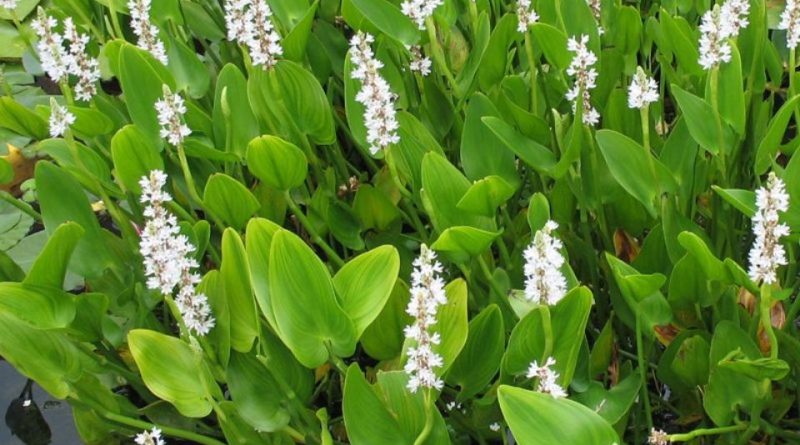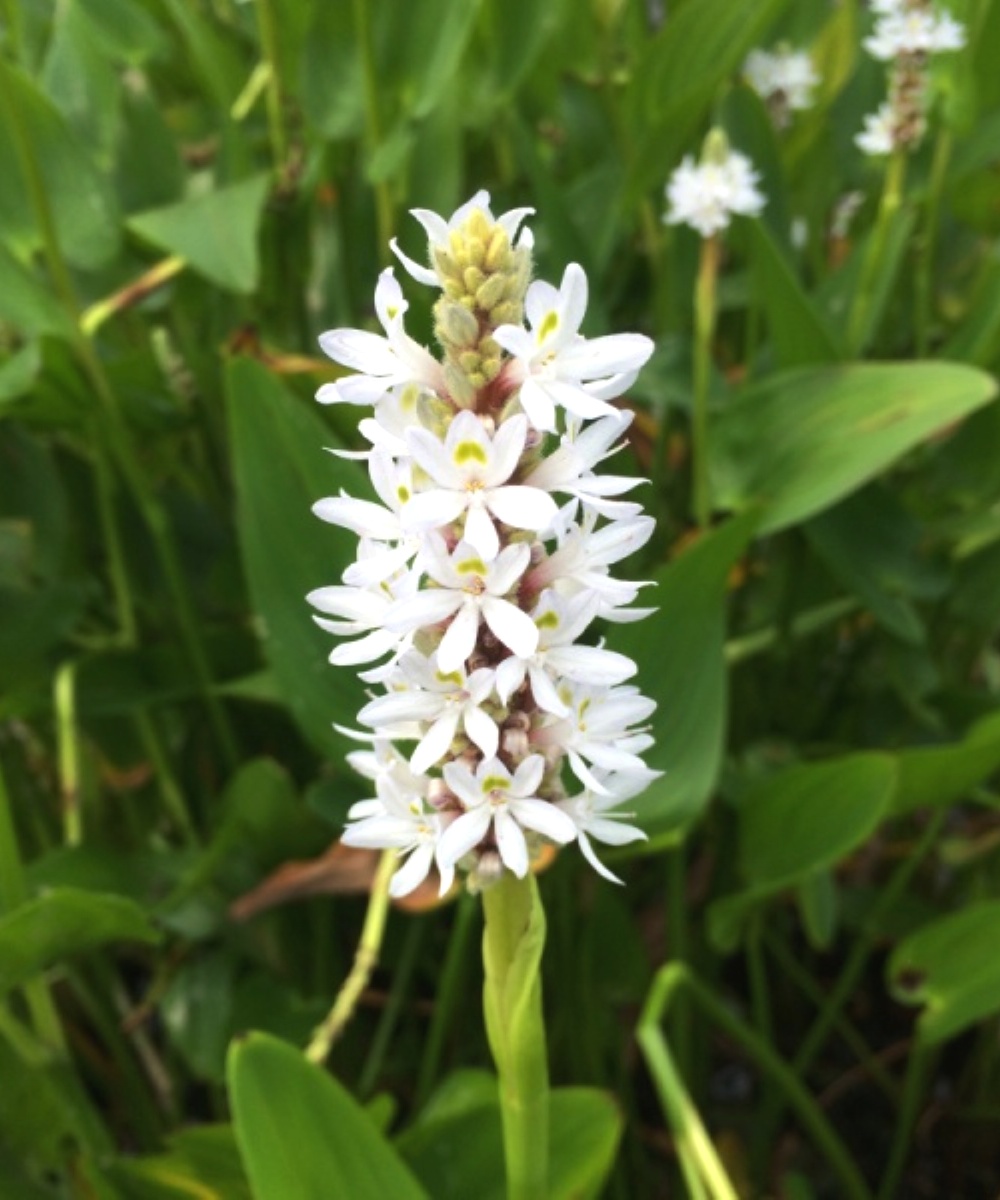Pontederia cordata alba
Pontederia cordata alba
White Pickerel Weed (Pontederia cordata L. var alba) is a herbaceous species belonging to the Pontederiaceae family.
Systematics –
From a systematic point of view it belongs to:
Eukaryota Domain,
Kingdom Plantae,
Magnoliophyta Division,
Liliopsida class,
Commelinales Order,
Pontederiaceae family,
Genus Pontederia,
Species P. cordata.
Variety P. c. alba.
Etymology –
The term Pontederia of the genus was dedicated to the Vicentine physician and botanist Giulio Pontedera (1688-1757) who taught at the University of Padua and became prefect of the botanical garden.
The specific epithet cordata means heart-shaped, heart-shaped, from cor, cordis heart: referring to the leaves.
The variety’s name alba comes from albus, white, referring to the flowers.
Geographic Distribution and Habitat –
Pontederia cordata is a monocotyledonous aquatic plant native to the American continent in a very vast territory ranging from eastern Canada to southern Argentina.
Its native habitat is that of wetlands, including the edges of ponds and lakes, ranging from the southern wetlands to the northern rivers of the Louisiana Everglades.
Description –
Pontederia cordata alba is a bright green, jade green plant with a height above the water level of about 90 cm.
The foliage is heart-shaped and the spikes are large and with flowers ranging from blue to violet.
The flowers are white and are highly sought after by pollinating insects and dragonflies.
The flowering period is from June to September.
When the plant begins to produce seeds, the stem that holds the inflorescence bends to submerge the fruit and seeds.
Cultivation –
Pontederia cordata alba is a plant that prefers bright and sunny places for many hours of the day to produce abundant flowering. If exposed to partial shade or total shade, the plant produces leaves to the detriment of the flowers. It does not fear the cold and also resists frost as long as the rhizome does not come into direct contact with the ice and is covered by about 15 cm muddy soil. It survives cold temperatures between -14 and -9 ° C.
It prefers places with the presence of water on various types of soils, which is why it should be grown in water or along the edges of ponds in a very humid, marshy substratum with a slightly acidic pH. The plants should be planted in large containers filled with universal soil mixed with sand, which should be sunk into a not too deep pond. The optimal soil must be rich, peaty and sandy. It suffers in excessively calcareous water and in brackish ones. It is also grown in pots and in gardens with moist, nutrient-rich soil.
The plant reproduces by seed in autumn and by agamic or vegetative way it is propagated by division of the tufts in spring.
The plants are planted at a depth of 40 cm in order to keep the root or rhizome completely submerged by water. In regions where the water tends to freeze, the plants should be planted with the entire container so that they can be easily moved to a cold greenhouse during the winter.
Customs and Traditions –
Pontederia cordata alba is a marsh plant identical to Pontederia cordata but, unlike this one, its flowers are white.
This plant adapts to any pond, from mini-ponds to large lakes, depending on the size of the pot. It is also very useful for the phyto-purification of water in ponds and bio-pools.
Dragonflies use it for laying eggs, as well as for crouching. The larvae use the stems to get out of the water.
Its leaves, which look almost tropical, provide food and shelter for many animals.
The seeds are edible, as are the young stems after cooking.
Preparation Method –
Pontederia cordata alba is a plant that is mainly used for ornamental purposes or for constructed wetlands; however, both the seeds and the young stems can be consumed after cooking.
Guido Bissanti
Sources
– Acta Plantarum – Flora of the Italian Regions.
– Wikipedia, the free encyclopedia.
– Useful Tropical Plants Database.
– Conti F., Abbate G., Alessandrini A., Blasi C. (edited by), 2005. An annotated checklist of the Italian vascular flora, Palombi Editore.
– Pignatti S., 1982. Flora of Italy, Edagricole, Bologna.
– Treben M., 2000. Health from the Lord’s Pharmacy, Advice and experiences with medicinal herbs, Ennsthaler Editore.
Warning: Pharmaceutical applications and alimurgical uses are indicated for informational purposes only, they do not represent in any way a medical prescription; therefore no responsibility is taken for their use for curative, aesthetic or food purposes.


